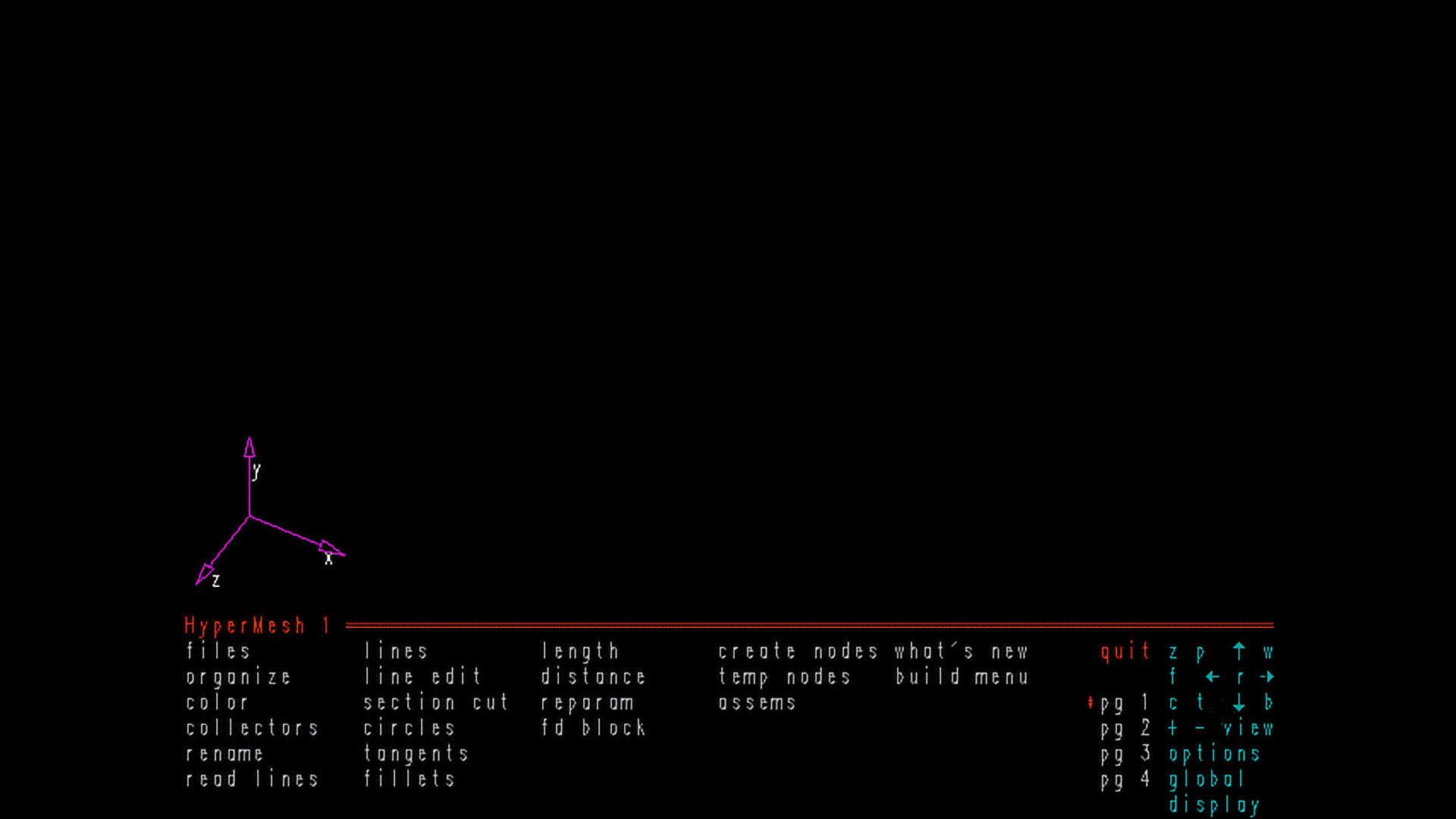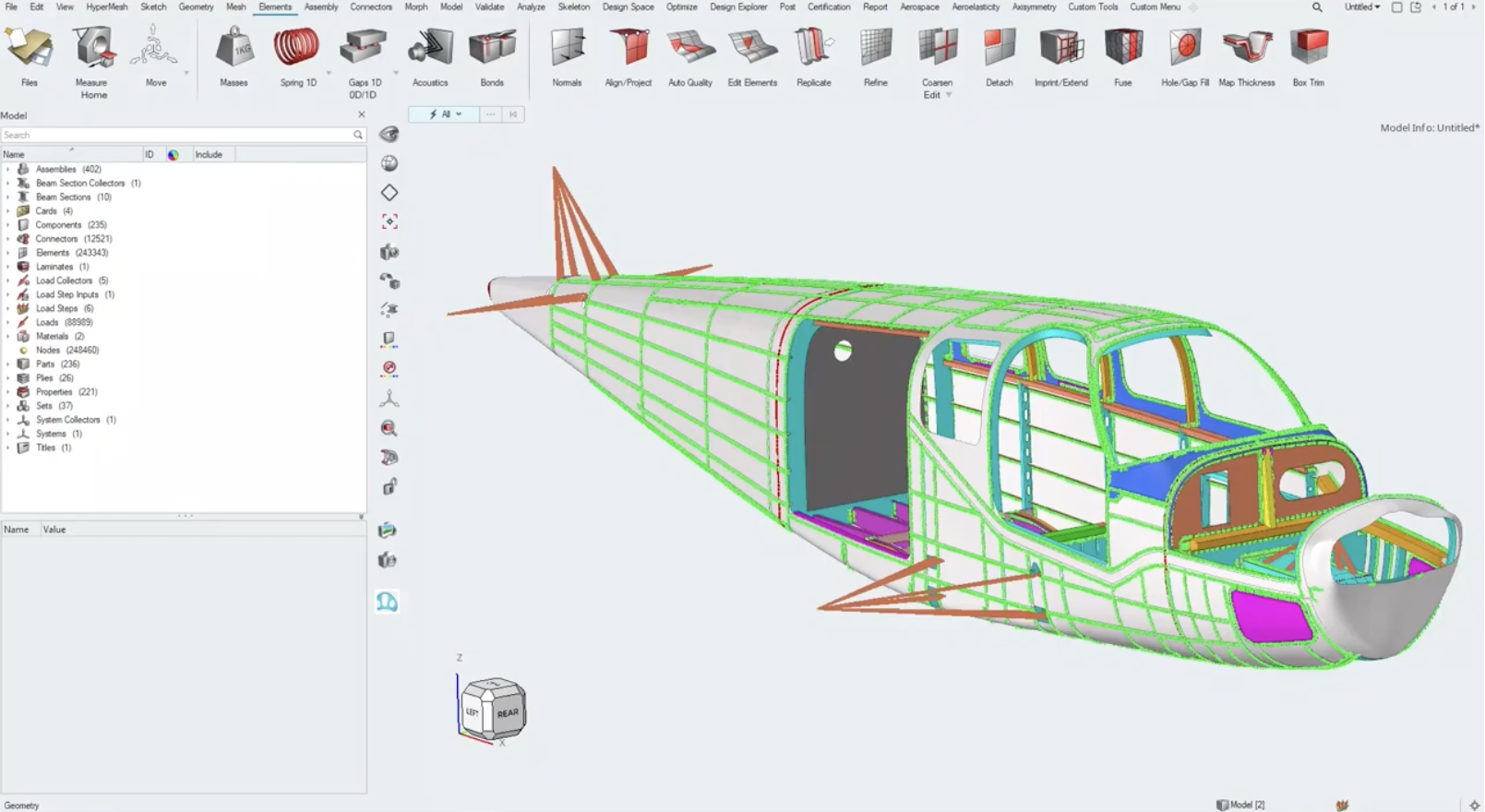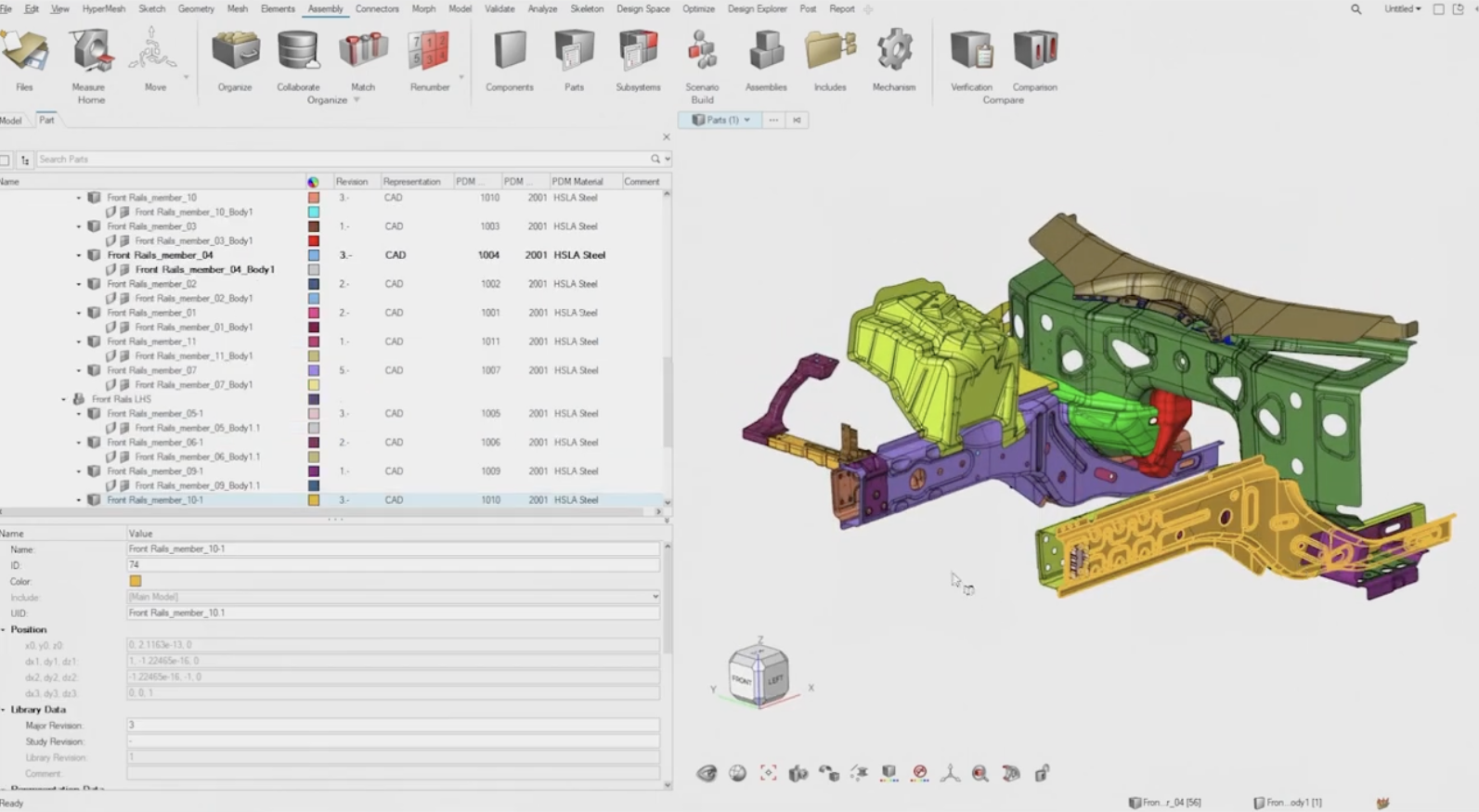
Altair HyperWorks | Another Step in Evolution
The Future of Altair HyperMesh

In business, you must evolve to stay relevant, innovative, and competitive. We’ve been evolving our HyperWorks platform for decades, and our next generation of HyperMesh offers advanced capabilities to solve engineering challenges for the next 30+ years.
Driven by an intuitive user experience and based on a modernized architecture, the new HyperMesh experience offers adaptable end-to-end solution-specific workflows to increase user productivity and enable the efficient development of our customers’ complex and connected products.
Starting from version 2023.0, we will no longer enhance our legacy desktop products, and the new HyperMesh experience will take its place.
This page contains the information and resources you need to successfully migrate to the new HyperMesh experience, starting with Altair HyperWorks 2023 and beyond.
Transition to New HyperMesh
Make your transition to the new HyperMesh experience successful using the information, guides, and learning assets listed in the Transitioning to the Latest HyperMesh GUI from Legacy HyperMesh blog in the Altair Community.
Get Started

The new HyperMesh experience saved around a day of time. Graphical selection was huge when reviewing the model. Keyboard shortcuts for organizing, hiding, isolating saved seconds at a time which quickly added up.
— Adam Brinkman, Structural Architect, Google Pixel
Frequently Asked Questions
We will be retiring legacy desktop products and replacing them with the new HyperMesh experience in phases between August 2022 - August 2023. We do not want there to be any surprises throughout this process. Please take a few seconds to review the timeline of changes below so that you can prepare accordingly.
- August 2022 - Simulation 2022.1
- Migrate HyperWorks Desktop installation executables to HyperWorks executables.
- January 2023 - Simulation 2022.2
- Continue to convert all legacy HyperMesh panels to ribbons, dialogs, and browsers.
- April 2023 - Simulation 2022.3
- Address planned enhancements and bug fixes.
- August 2023 - HyperWorks 2023.0
- Put legacy desktop products into maintenance mode.
- Customers will be given the option to install the 2022.3 legacy version of HyperMesh along with the latest hotfix patches with the master installer for 2023.0.
- Altair will continue to support the 2022.3 legacy version of HyperMesh as long as it is needed to ensure a successful migration to new HyperMesh.
Altair will continue to provide technical support for legacy HyperMesh until all of our customers have successfully migrated to the new HyperMesh experience.
Please note that we are no longer developing new features for legacy HyperMesh. Technical support will only cover:
- General usage questions
- Identification/confirmation of issues. If possible, our technical support team will provide a workaround for the legacy version. We will also communicate how you can resolve this issue in the new HyperMesh experience.
The legacy HyperMesh desktop clients that are being retired and replaced with the new HyperMesh experience include the following:
- HyperMesh
- HyperView
- HyperGraph
- MotionView
- MediaView
- TableView
- TextView
The new HyperMesh experience introduces a new interface and optimized workflows. By adopting both the new interface and new workflows, reductions in time can be anywhere from 15% - 70%, and reductions in click count by factors of 2 to 10, and even more.
Using the new interface will allow you to access capabilities that are new as well as those that are significantly improved.
Take a deeper look at the new and improved capabilities and watch videos comparing workflows here.
While we have developed the new HyperMesh experience to benefit from the most recent graphic technologies, some performance gaps may be observed between the legacy and the new interface if your system is not up to date.
Please review system recommendations to ensure your system complies with the requirements.
A comprehensive set of assets are available to help you migrate to the new HyperMesh experience.
- Access 24/7 self-paced learning, Knowledge Base articles, and Altair How-To Youtube channel (200+ videos). Get started.
- Attend virtual, instructor-led training sessions. See our class schedule.
- Submit a support case for Level 1 support which consists of general requests and reporting of enhancements and/or defects.
Your dedicated account manager will be available to schedule office hours and provide additional support as needed.
No. Files associated with the same version of Altair HyperWorks products (such as CAD, hm, solver deck and result files) can be imported, exported and opened in legacy and new HyperMesh without losing or distorting data. This flexibility allows users throughout your company to switch at different times while continuing to collaborate regardless of the interface each individual is using.
These FAQs are related to the new HyperMesh experience. Please note that we are in a process of implementing changes to the data structure, which comes at the same time as the new HyperMesh experience. These changes will be included in both legacy and new HyperMesh. A separate set of assets will be available to help you understand these changes. Subscribe to the Transitioning to the New HyperMesh 2022 User Interface blog to receive updates on this topic.
All legacy databases (.hm files) and solver decks can be loaded into the new HyperMesh experience and will function as expected.
We have introduced new entity types in HyperMesh for improved organization of solver entities. For example, we moved the EIGRL card to a “loadstep input.” The new HyperMesh entities do not affect the final solver deck.
Legacy and/or deprecated entities, such as Assemblies and Components, will be automatically mapped to the appropriate entity upon import of a binary file or solver deck.
You may need to make manual updates to ensure a legacy Assembly hierarchy has converged correctly within an existing Part hierarchy.
Have you written automation and extension scripts based on the base functionality of our legacy HyperMesh products?
As for legacy versions of HyperMesh, some Tcl commands are deprecated and, consequently, listed in a dedicated section of the API Programmer’s Guide.
Starting in Simulation 2022.2, a Script Parser will be available to scan your HyperMesh Tcl scripts and identify the API commands in the code. The built-in database supports three categories for API, Packages, and Technologies. You can easily extend this database and create new subcategories to look for specific commands. For example, when looking at the API section of the report, you can identify areas within your scripts that contain commands related to HyperMesh panels. You must update your scripts to exclude panel references, as panels will no longer be available in the HyperWorks 2023.0 release.
You can interactively review the output in the Script Parser GUI or export it to a CSV report. The information provided includes the details about the file and line you can locate a particular command. The Script Parser will not update the scripts automatically, as you should carefully consider each modification within the context of the entire automation solution. Please review the report and manually update the scripts as necessary. The API Programmer’s Guide associated with the version of HyperMesh you are using can also be used for additional support when editing your scripts. Please get in touch with Altair Support or your Technical Account Manager if you require further assistance.
You can re-use the hmcustom.tcl command except for:
- Keyboard user mapping, which is currently not supported
- GUI customizations which include custom menus, toolbar, etc.
Preference file(s) should be compatible with no effort.
The userpage.mac command may still work; however, Altair no longer supports this customization mode. We recommend moving to our new customization environment named Extensions, which allows you to define custom ribbons, toolbars and/or menus for all HyperMesh clients (that is, HyperMesh, HyperView, HyperGraph, etc.). Eventually, extensions will supersede preference files too.
The Toolbelt can also help you to access HyperWorks native or customized tools quickly.
Additional Resources
Ask questions, browse the Knowledge Base, and engage in discussions with other community members.
CommunityAccess classroom courses scheduled globally, virtual courses in all time zones, and eLearning.
LearningFind product specific help manuals, release notes, reference guides, tutorials, and model files.
Documentation









